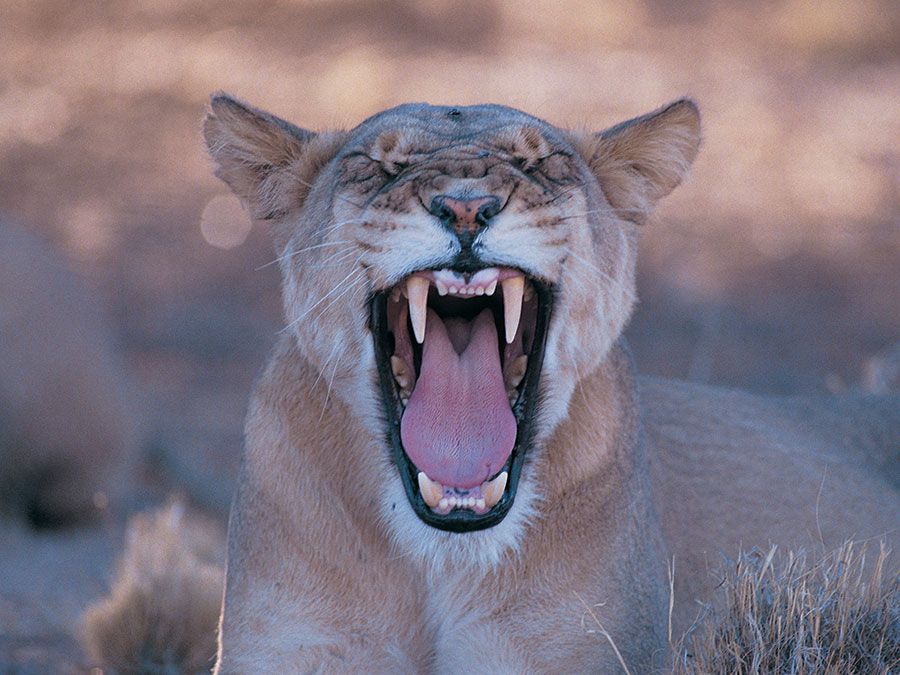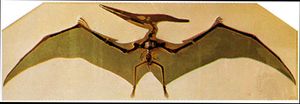Pteranodon
- Related Topics:
- pterosaur
- pterodactyl
- Late Cretaceous Epoch
Pteranodon, (genus Pteranodon), flying reptile (pterosaur) found as fossils in North American deposits dating from about 90 million to 100 million years ago during the Late Cretaceous Period. Pteranodon had a wingspan of 7 metres (23 feet) or more, and its toothless jaws were very long and pelican-like.
A crest at the back of the skull (a common feature among pterosaurs) may have functioned in species recognition; the crest of males was larger. The crest is often thought to have counterbalanced the jaws or have been necessary for steering in flight, but several pterosaurs had no crests at all. As compared with the size of the wings, the body was small (about as large as a modern turkey [Meleagris gallopavo]), but the hind limbs were relatively large compared with the torso. Although the limbs appear robust, the bones were completely hollow, and their walls were no thicker than about one millimetre. The shape of the bones, however, made them resistant to the aerodynamic forces of flight. Pteranodon, like other pterosaurs, was a strong flier with a large breastbone, reinforced shoulder girdles, and muscular attachments on the arm bones—all evidence of power and maneuverability. However, as in the largest present-day birds, Pteranodon’s large size precluded sustained beating of the wings, so it most likely soared more than it flapped. The eyes were relatively large, and the animal may have relied heavily upon sight as it searched for food above the sea.
The design of Pteranodon’s jaws and the discovery of fossilized fish bones and scales with Pteranodon specimens suggest that it was a fish eater. Paleontologists speculate that it may have skimmed the water while in flight, landed first to capture fish near the water’s surface, or dove after prey as modern diving birds do.

Fossils of Pteranodon and related forms are found in Europe, South America, and Asia in rocks formed from substances found in marine environments, which supports the inference of a pelican-like lifestyle. It is probable that Pteranodon took off from the water by facing into sea breezes that provided enough force to lift the reptile into the air when the wings were spread. (See also pterodactyl.)





















